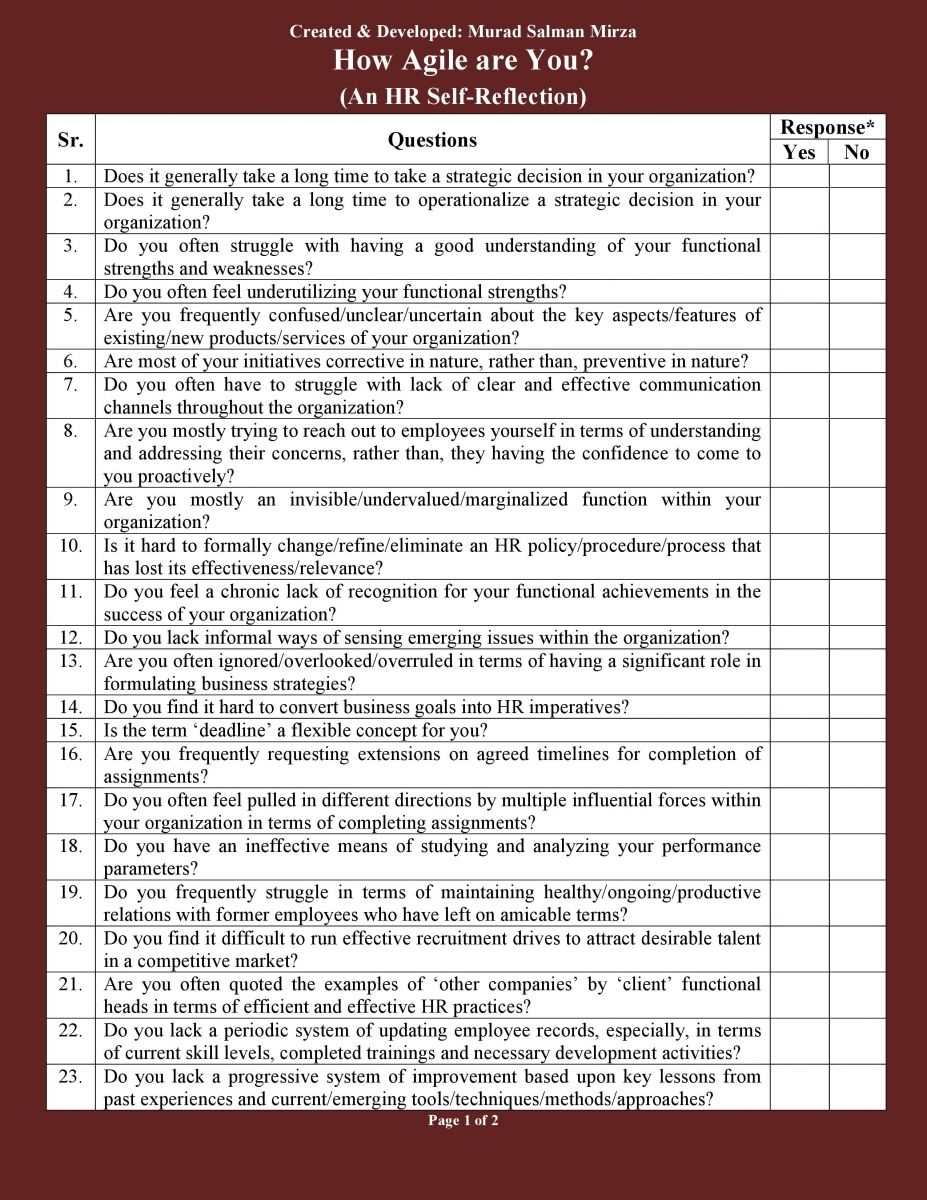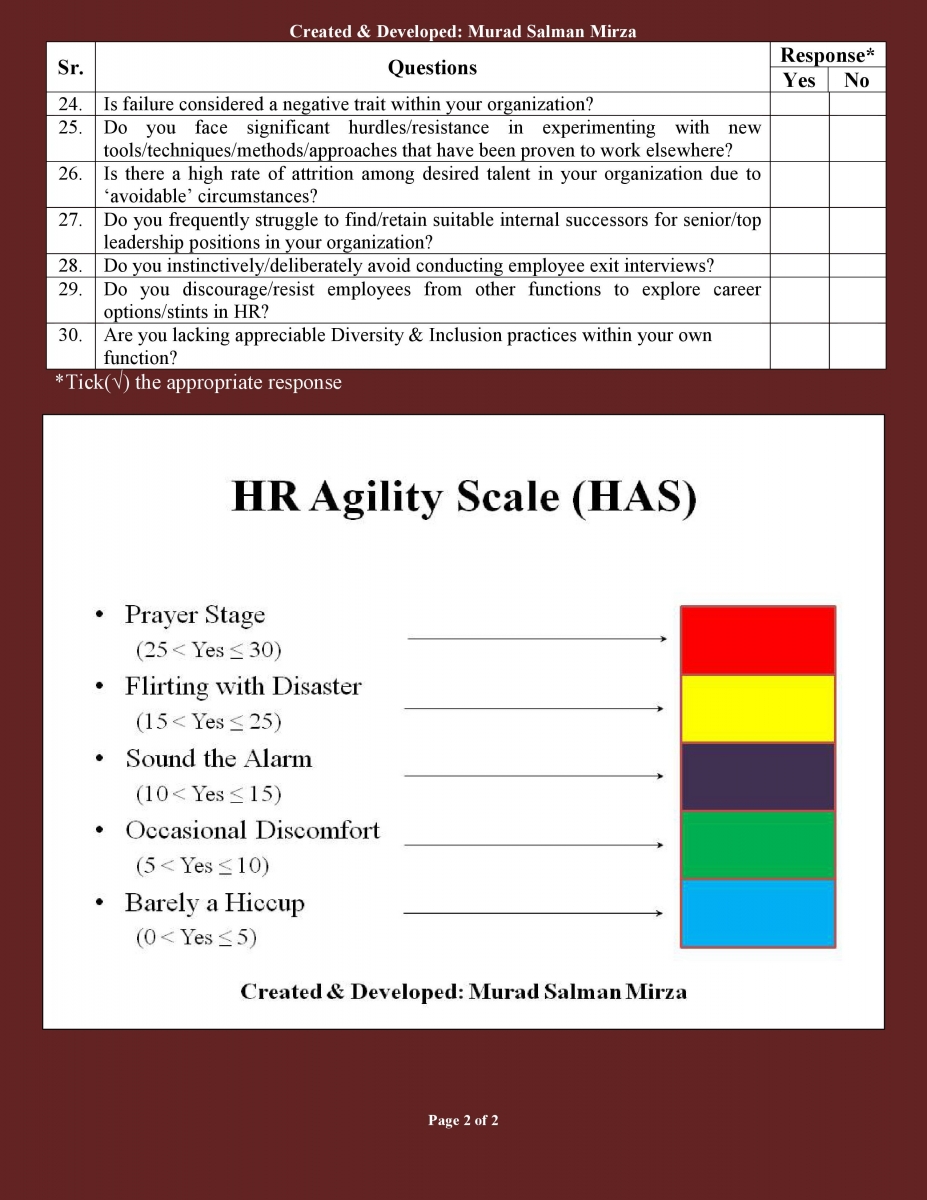There has been an increased focus lately on the need for HR agility within progressive organizations that are seeking a profound competitive edge in the digital world. However, there is a lurking concern that HR agility is in danger of becoming the trending buzzword in corporate conversations, rather than actually delivering on its promise. Let’s first look at what HR agility actually is through the discerning lens of a clear and simple definition: HR agility is the capability of the HR function to respond more quickly and effectively to changing employee expectations, workplace disruptions, and business requirements. Therefore, the expectations for the HR function are being elevated to a level where it can keep pace with the evolving demands of the digital world.
A significant number of HR Leaders see HR agility as their ticket to the big table for stamping their justifiable presence as strategic partners in determining/cementing the future direction of the organization. This has prompted quite a few visible initiatives that have been hastily undertaken to provide ample evidence in the respective context. However, this also opens the door for committing significant errors, especially in terms of overestimating the inherent strengths of the HR function and the daunting challenges of maintaining a brisk pace while delivering desired results on multiple fronts.
Consequently, it is prudent to gain a clear understanding of the status quo in order to ensure a baseline is firmly established before any measures are taken within the realm of HR agility. This also systemizes the approach to ingraining agility within the HR function and lays the foundation for consistently providing a high probability of success in terms of fulfilling desired expectations. The following HR Agility Scale (HAS) can be used for an honest self-reflection (the files also can be downloaded at the end of this article):


The result obtained from utilizing the HR Agility Scale then can be used to develop astute strategies/action plans that are designed in congruence with associated goals/objectives.
Another effective way to benefit from the HR Agility Scale is to use it periodically, e.g., annually, for developing a temporal record of the status quo in order to gauge the improvement level in the agility of the HR function and the lessons learned in terms of overcoming any impediments/challenges. This also can be tied to corroborating performance metrics, e.g., average time to hire, average cost per hire, average complaint resolution time, performance rating average of HR employees, bench strength for succession planning, problem employee rate, HR function satisfaction rate, annual training and development (T&D) cost per employee, annual training and development (T&D) hours per employee, diversity and inclusion (D&I) rate, etc., and surveys from client functions within the organization that can provide factual evidence of the HR function’s enhanced ability to meet/exceed expectations.
HR agility requires sincere teamwork with client functions, and it thrives on constructive feedback that is crucial for refining the approach taken to provide seamless services. The scale creates a robust bond between the role played by the HR function and the organizational imperatives. Furthermore, it provides the impetus for innovation that increasingly is becoming a life-saving skill for organizations in an era where the proverbial sun routinely sets on the titans of yesterdays still caught up in the hangover of past accomplishments and perilously ignoring or being complacent at the rise of ambitious start-ups eager to disrupt the corporate landscape.
Murad Salman Mirza is an innovative thinker and an astute practitioner of areas within and associated with the fields of organizational development, talent management, and business transformation. He has lived, studied, and served in different regions of the world, including, the U.S., Australia, South Asia, and the Middle East. His LinkedIn profile can be viewed at: https://www.linkedin.com/in/muradsalmanmirza



